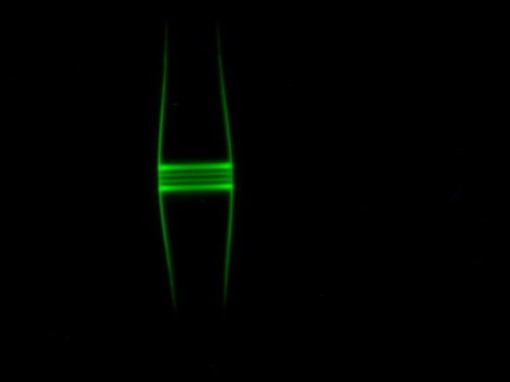 The researchers of the Wien Universität Technische, in Austria, have actually transformed an optical fibre cable into a “laboratory” for quantum experimentations, with the target of creating, to manipulate light, the smallest possible optical switch. As preliminary remark, a switch, in the Information Technology context, is a device that allows commutating a data flow or a light signal (in this case we speak of optical switch), from a net path to another and, even if the electronics miniaturization has reached exceptional levels, nobody had ever succeeded in creating an optical switch constituted by a single atom. The starting point is a device called “bottle resonator” (in the sense of: capable of entering into resonance), where it is possible to make light follow some circular, therefore neither rectilinear, courses, like in a single-mode optical fibre, nor with the continuos reflections on the cladding that surrounds the core of a multi-mode optical fibre. Placing one of these glass resonators close to a fibre, it too made of glass, which transports a light signal, you determine a coupling with the light that crosses the separation border, entering the resonator in a quantity equal to about 1%. The phenomenon occurs when the resonator circumference coincides with the light wavelength, and from this resonator the light can then pass to a second optical fibre. This system constituted by the two fibres and by the resonator is very sensitive, and it has allowed guessing and experimenting the optical switch with a single atom: placing a single atom of rubidium in contact with the resonator, the system behaviour changes completely. If the light is in resonance with the atom, it becomes possible to keep the whole light in the first optical fibre, without passage to the resonator and from here to the second fibre. Hence a typical switch behaviour. Further in-depth studies were based on the fact that the rubidium atom occupies different quantum states, and only one of them interacts with the resonator, in the others it is as if there was not the atom, with the light that passes, like before, from one fibre to the other through the resonator. These experiments represent the basis from which to identify how to exploit the quantum physics to structure a “quantum communication” that sees light as protagonist and the futuristic quantum computers as target.
The researchers of the Wien Universität Technische, in Austria, have actually transformed an optical fibre cable into a “laboratory” for quantum experimentations, with the target of creating, to manipulate light, the smallest possible optical switch. As preliminary remark, a switch, in the Information Technology context, is a device that allows commutating a data flow or a light signal (in this case we speak of optical switch), from a net path to another and, even if the electronics miniaturization has reached exceptional levels, nobody had ever succeeded in creating an optical switch constituted by a single atom. The starting point is a device called “bottle resonator” (in the sense of: capable of entering into resonance), where it is possible to make light follow some circular, therefore neither rectilinear, courses, like in a single-mode optical fibre, nor with the continuos reflections on the cladding that surrounds the core of a multi-mode optical fibre. Placing one of these glass resonators close to a fibre, it too made of glass, which transports a light signal, you determine a coupling with the light that crosses the separation border, entering the resonator in a quantity equal to about 1%. The phenomenon occurs when the resonator circumference coincides with the light wavelength, and from this resonator the light can then pass to a second optical fibre. This system constituted by the two fibres and by the resonator is very sensitive, and it has allowed guessing and experimenting the optical switch with a single atom: placing a single atom of rubidium in contact with the resonator, the system behaviour changes completely. If the light is in resonance with the atom, it becomes possible to keep the whole light in the first optical fibre, without passage to the resonator and from here to the second fibre. Hence a typical switch behaviour. Further in-depth studies were based on the fact that the rubidium atom occupies different quantum states, and only one of them interacts with the resonator, in the others it is as if there was not the atom, with the light that passes, like before, from one fibre to the other through the resonator. These experiments represent the basis from which to identify how to exploit the quantum physics to structure a “quantum communication” that sees light as protagonist and the futuristic quantum computers as target.
Wire Tech World © 2025 All Rights Reserved



